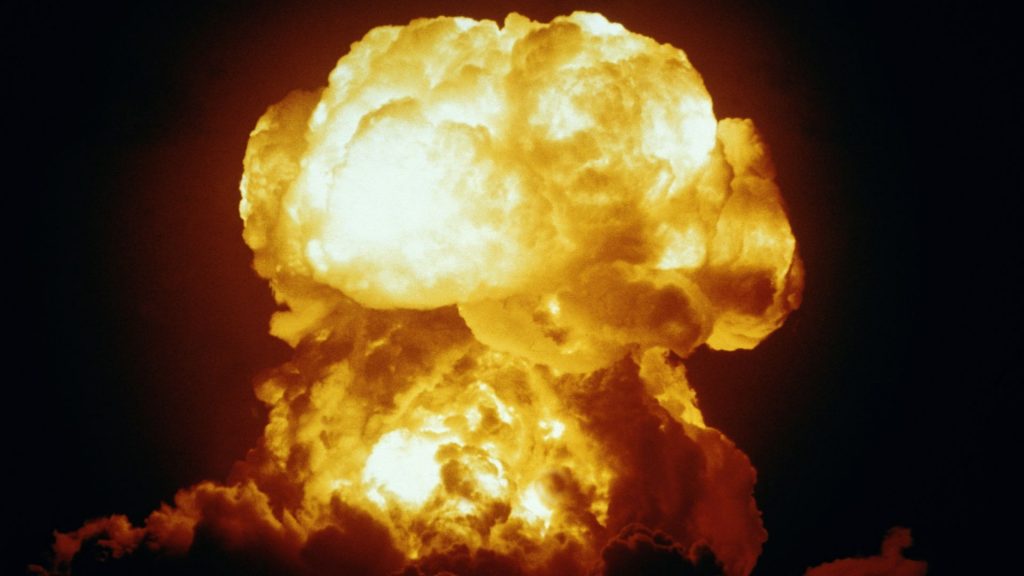China tests hydrogen-based bomb that burns hotter, longer than TNT
Ella Greene April 21, 2025 0
Chinese researchers successfully tested a new hydrogen-based explosive that releases sustained high heat without using nuclear material. The weapon, developed by the China State Shipbuilding Corporation’s 705 Research Institute, reportedly produced a fireball exceeding 1,800°F that lasted more than two seconds — 15 times longer than conventional TNT, according to the South China Morning Post.
What is the bomb made of?
According to Chinese defense researchers, the weapon uses magnesium hydride, a solid-state material that stores hydrogen. When triggered by conventional explosives, the material fractures into fine particles, releasing hydrogen gas that ignites and creates an intense fireball.
The blast resembles the thermal effects of thermobaric weapons, though with a weaker pressure shockwave, researchers wrote in a peer-reviewed paper published in the Journal of Projectiles, Rockets, Missiles and Guidance, cited by SCMP.
How does the explosion work?
The blast relies on a cascading chain reaction. Detonation fractures the material, releasing hydrogen that ignites rapidly. The combustion triggers further decomposition and keeps the fireball burning until the fuel runs out.
Researchers said the process enables controlled thermal projection and wide-area damage.
What are its potential uses?
Chinese analysts said the bomb can disable vehicles, destroy drone swarms and block access to key areas. Its sustained heat can burn through armor and buildings, making it a potential tool for urban warfare and attacks on fortified positions.
Is it scalable for broader military use?
Until recently, researchers produced magnesium hydride only in small lab batches. However, China opened a production facility in Shaanxi province this year, capable of manufacturing 150 tons annually. This development makes large-scale deployment more feasible, and researchers said the material could also support submarine fuel cells or extended drone missions.
Could the bomb be used in Taiwan conflict scenarios?
Some analysts told Asia Times the weapon could play a psychological or tactical role in any future conflict with Taiwan. Drawing comparisons to U.S. “shock and awe” strategies and Russian use of thermobaric weapons in Ukraine, observers noted the bomb’s capacity for sustained heat could target underground defenses or urban strongholds in places like Kinmen or Matsu.
Does the weapon violate international law?
The bomb does not use nuclear materials; therefore, it avoids restrictions under international nuclear treaties. However, its similarity to thermobaric weapons, which have drawn criticism for their devastating impact in civilian areas, has raised humanitarian and legal concerns, according to SCMP.
What’s next for China’s thermal weapons program?
The People’s Liberation Army hasn’t said when or where it might use the new hydrogen bomb. However, the weapon adds to China’s expanding lineup of advanced energy-based arms. It fits into its broader push to modernize the military with green technologies seen in electric-powered container ships.
Ella Rae Greene, Editor In Chief
Ella Greene
Ella and the staff at Clear Media Project (CMP) curate these articles.
Unless otherwise noted CMP does not write these articles.
The views, thoughts, and opinions expressed in the articles published on this blog belong solely to the original authors and do not necessarily reflect the views of the blog owner. The blog owner does not claim ownership of the content shared by contributors and is not responsible for any inaccuracies, errors, or omissions.
All rights and credits goes to its rightful owners. No Copyright Infringement is intended. If you believe any content infringes on your rights, please contact us for review and potential removal.





